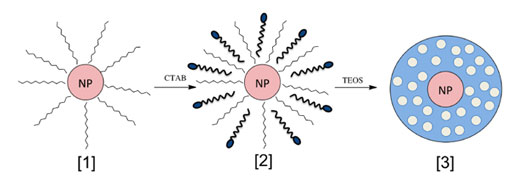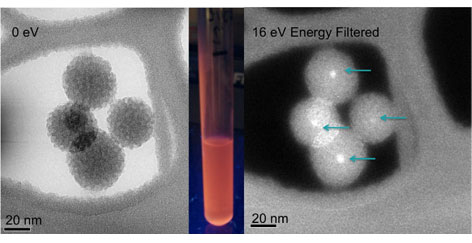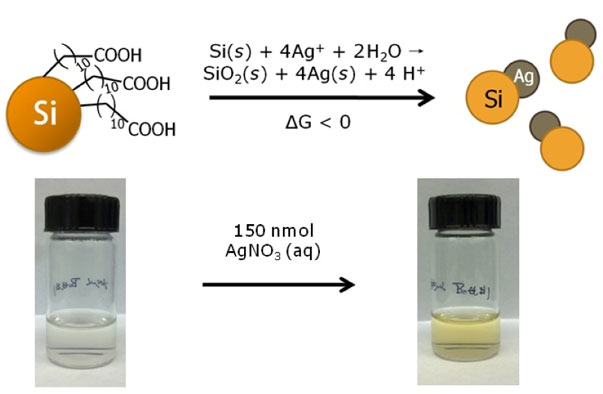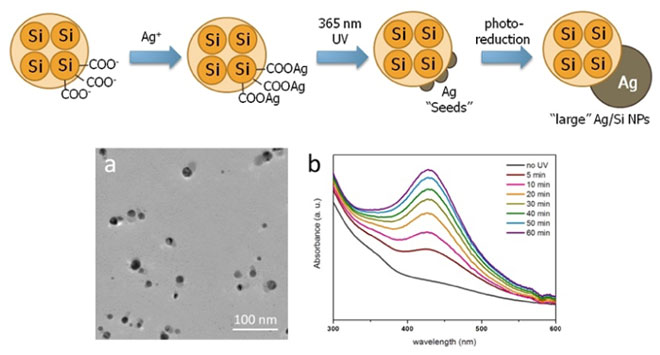The Veinot group is exploring methods for forming multifunctional hybrid materials. One of these methods involves combining the optical and bioinert characteristics of silicon nanocrystals (Si-NCs) with the high surface area of mesoporous silicate. We achieve this by utilizing surfactants as phase transfer/templating agents and perform a sol-gel reaction in solution to yield mesoporous silica encapsulated photoluminescent nanocrystals. This particular procedure (Scheme 1) has been employed by the Veinot group to encapsulate Si-NCs that emit at various wavelengths ranging from orange to near-IR (Figure 1). The resulting nanospheres range in diameter from 30 to 40 nm and exhibit luminescence that is stable for extended periods (i.e., months). It is our intent to employ to the luminescent core of the particles to trace nanosphere location in a varied of media and the MPS shell can be exploited as a drug-delivery agent.
Scheme 1

Figure 1

Other hybrid nanostructures investigated by the Veinot group include semiconductor/ metal heterostructures consisting of various metals with Group 14 semiconductor nanostructures including Si-NCs and Ge nanowires (Ge-NWs). Galvanic displacement (Scheme 2) and photoreduction (Scheme 3) are two facile strategies to fabricate Ag/Si heterostructures that could have potential application as photocatalysts.
Scheme 2

Scheme 3

The Veinot Group achieves metal/Ge NW synthesis through a templated growth method. Metal/Ge interfaces are formed inside of anodic aluminum oxide templates (AAO) via sequential thermal decomposition of sol-gel derived germanium precursors and metal nanoparticles.